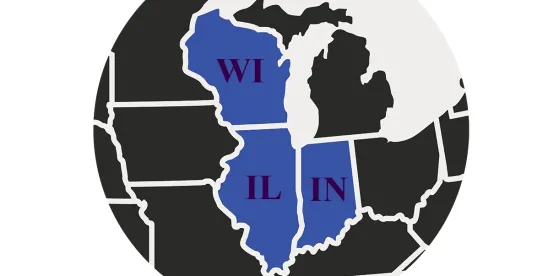On the second round of a copyright dispute, the US Court of Appeals for the Seventh Circuit affirmed in part, reversed in part and remanded (again) to the district court to apply the “independent economic value test” handed down by the Court in the first iteration of the dispute to determine what constitutes as “one work” for purposes of calculating statutory damages where a jury finds infringement on multiple works registered in a single copyright application. Amy Lee Sullivan, dba Design King v. Flora Inc., Case No. 15-cv-298 (7th Cir. Mar. 31, 2023) (Flaum, Scudder, Eve, JJ.)
In 2013, graphic design artist Amy Sullivan sued herbal supplemental company Flora for copyright infringement after Flora used Sullivan’s illustrations in a manner exceeding the scope of the parties’ license agreement. The district court instructed the jury that Sullivan could receive separate statutory awards for 33 acts of infringement on 33 individual illustrations, which were the subject of two separate US copyright registrations, as compilations. The jury issued a statutory damages award of $3.6 million. Flora appealed.
In its decision on the first appeal, the Seventh Circuit adopted the independent economic value test to address the standard for determining whether multiple related works of authorship are each entitled to a separate statutory damages award, or if the related works constitute one compilation warranting only a single statutory damages award. Because the record in Sullivan’s case was insufficient to make that determination and assess proper damages, the Seventh Circuit remanded to the district court to determine whether Sullivan’s illustrations had standalone “distinct and discernable value to the copyright holder.”
On remand, the district court found that Flora waived several arguments challenging the independent economic value of certain of Sullivan’s illustrations, and therefore entered the same jury verdict. Flora appealed again.
After a lengthy analysis on the scope of remand, the Seventh Circuit found that the district court violated its mandate on remand because it did not put the independent economic value assessment to a jury, and instead decided the factual issue on the same record the appeals court had previously found insufficient. The Court then moved to its summary judgment analysis and reiterated the independent economic value test for considering whether Sullivan’s 33 illustrations constituted 33 individual works or instead were parts of two compilations. The Court articulated several relevant factors that went into its totality of the circumstances analysis, including whether the copyright holder marketed or distributed the works independently or as a compendium, whether the works were produced together or separately, how the works were registered for copyright protection and, ultimately, whether the market assigned value to the works.
The Seventh Circuit concluded that Flora raised facts and arguments relating to the independent economic value test that were within the scope of remand and not waived. Flora was not prohibited from arguing several primary positions. First, Flora noted that it provided Sullivan with only two invoices for both “illustration collections,” and Sullivan registered the illustrations in two compilation copyrights, rather than 33 separate registrations. The Court explained that, viewed in a light most favorable to Flora, the two invoices might support the inference that the 33 independent illustrations lacked independent economic value. As to the two copyright registrations, the Court explained (in line with the Ninth Circuit) that how the works are registered may be relevant when evaluating statutory damages. With a slight nod to how the two registrations should be viewed, the Court noted that “if applicants are worried about the number of statutory damages they would receive, they may register their works separately . . . to increase the likelihood of receiving multiple statutory damages awards.”
Second, Flora argued that Sullivan failed to market the illustrations independently, suggesting they lacked independent economic value. The Seventh Circuit found that the district court erred in its summary judgment assessment when it credited an expert’s testimony on actual damages to the issue of statutory damages. The district court also erred in considering the summary judgment motion by weighing certain evidence of Flora’s perceived economic value of the works—a job better left to the jury, according to the Seventh Circuit.
Third, regarding Flora’s evidence on remand offered to show a lack of independent economic value, the Seventh Circuit disagreed with the district court’s criticism of that evidence as “nitpicking” certain aspects of the illustrations. The Seventh Circuit expressly stated that Flora can and should “nitpick” the illustrations in challenging their independent economic value by pointing out that many of the illustrations contained Flora-specific content, such as Flora’s trademarks and product names. Flora may try to prove that some, but perhaps not all, of the illustrations lack such independent economic value. The Court also noted that Flora may point to illustrations that are composed exclusively of “background textures” being one solid color, which might suggest such illustrations lack independent economic value.
The Seventh Circuit concluded that on remand, Flora may “nitpick” the illustrations and raise the arguments made on appeal in the lower court action that directly relate to the independent economic value of the works. The Court also reminded Flora that issues of infringement or joint authorship have already been decided in the prior jury trial and fall outside the scope of the Court’s remand.




 />i
/>i
